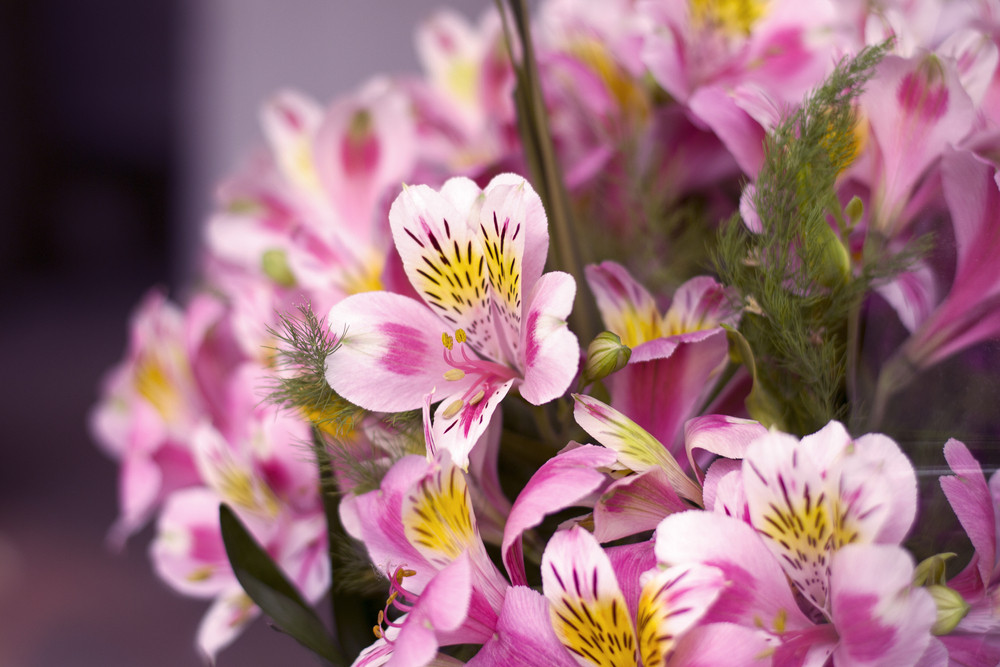If your feline friend has nibbled on your beautiful Peruvian Lily, you’re likely searching for answers with a racing heart. It’s true that lilies are notorious for their toxicity to cats, causing immediate concern for pet owners. However, when it comes to Peruvian Lilies, also known as Alstroemeria, the situation is a bit nuanced.
While the ASPCA (American Society for the Prevention of Cruelty to Animals) lists Peruvian Lilies as non-toxic to cats, dogs, and horses, the Pet Poison Helpline and various veterinary resources classify them as mildly toxic. This discrepancy can understandably cause confusion and anxiety.
Understanding the differences between various types of lilies is crucial for any cat owner who enjoys having plants in their home or garden. This guide will clarify which lilies pose a serious threat to your cat, which are less concerning, and suggest a range of stunning, cat-friendly floral alternatives to brighten your space without worry.
For cat lovers and plant enthusiasts alike, knowing the facts about Alstroemeria and its impact on cats is essential. Keep reading to get informed and ensure the safety and well-being of your beloved pet.
Alstroemeria Plants: Not True Lilies, But Lily-Like
The reason Peruvian Lilies stand apart from the truly dangerous lilies lies in their botanical classification. Despite sharing the common name “lily,” Alstroemeria plants are not considered true lilies. This distinction is key to understanding their different toxicity levels.
True lilies, belonging to the Liliaceae family, are characterized by their trumpet-shaped flowers, prominent stamens, and long, slender leaves growing from a central stalk. Peruvian Lilies, while visually similar, are genetically distinct. Their resemblance to true lilies is primarily why they adopted the “lily” moniker.
Native to the landscapes of Chile and Argentina, Peruvian Lilies are tuberous perennials celebrated for their vibrant blooms in a spectrum of colors. They typically reach heights of one to three feet and are known for their vigorous growth, often spreading readily in garden settings. This ease of propagation makes them a popular choice among gardeners who often share the plant’s tubers.
Scientifically known as Alstroemeria, these flowers are also affectionately called Lily of the Incas or Princess Lily, all referring to the same captivating bloom.
 Alstroemeria flowers in various colors showcasing their lily-like appearance but distinct petal structure.
Alstroemeria flowers in various colors showcasing their lily-like appearance but distinct petal structure.
Image Credit: liubovi samoilova, Shutterstock
Distinguishing Peruvian Lilies from True Lilies
Common names in botany can often lead to misunderstanding. To accurately identify a plant, especially when pet safety is a concern, it’s best to look at the plant’s scientific name rather than relying solely on its common name. True lilies are classified under the Liliaceae family, and their Latin names typically begin with Lilium or Hemerocallis.
Beyond scientific classification, several physical traits can help differentiate Peruvian Lilies from true lilies:
- Flower Size: Peruvian Lilies generally have smaller flower heads compared to the often larger and more dramatic blooms of true lilies.
- Scent Profile: A notable difference is scent. Peruvian Lilies are virtually odorless, while true lilies often emit a distinct, sweet fragrance with subtle citrus notes.
- Petal Shape: Peruvian Lilies are characterized by shorter petals, some of which may exhibit speckled patterns. True lilies typically have longer, more elongated petals that contribute to their trumpet or star-like shape.
Identifying Lilies Highly Toxic to Cats
Unfortunately, the list of lilies that are severely poisonous to cats is not limited to just one species. Several popular lily varieties pose a significant health risk to felines. It is vital for cat owners to be able to recognize these dangerous plants and avoid bringing them into their homes or gardens.
Here are some of the most common and highly toxic lilies that should never be present around cats:
- Easter Lily (Lilium longiflorum)
- Tiger Lily (Lilium lancifolium)
- Wood Lily (Lilium philadelphicum)
- Asiatic Lily (and all hybrids within the Lilium genus Asiatic hybrids)
- Oriental Lily (and hybrids such as Lilium Oriental hybrids)
- Stargazer Lily (Lilium ‘Stargazer’)
- Rubrum Lily (Lilium speciosum var. rubrum)
- Lily of the Valley (Convallaria majalis) – While not a true lily, often referred to as one and is highly toxic.
- Gloriosa Lily (Gloriosa superba) – Also not a true lily but carries significant toxicity.
Plants belonging to the Daylily family (Hemerocallis) are also extremely toxic to cats and must be strictly avoided.
If you suspect your cat has come into contact with or ingested any part of these highly toxic lilies and is showing signs of poisoning such as vomiting, lethargy, loss of appetite, or kidney failure, immediate veterinary attention is critical. For urgent advice, contacting a vet online can provide rapid guidance.
💛 😺 Need Immediate Vet Advice? Connect Online Now!
 PangoVet online veterinary service logo for immediate pet health consultations.
PangoVet online veterinary service logo for immediate pet health consultations.
For quick access to veterinary expertise without leaving home, PangoVet offers a convenient online service. You can speak to a vet online to receive personalized advice and immediate support for your pet’s health concerns, all at an accessible price.
Click Here to Consult with a Vet Online
Understanding the Lower Toxicity of Peruvian Lilies for Cats
Peruvian Lilies are considered less toxic to cats compared to their highly dangerous counterparts. All parts of the Alstroemeria plant contain tulipalin A, a compound that can cause irritant dermatitis upon contact, potentially lasting for a few days. In some cases, mild gastrointestinal upset may occur if ingested, but symptoms are typically self-limiting and resolve without intervention. However, it’s always prudent to consult with your veterinarian if you have any concerns after your cat interacts with a Peruvian Lily.
While Peruvian Lilies are not as lethal as true lilies, it’s still advisable to keep them out of reach of your cats. “Less toxic” does not mean “non-toxic,” and preventing any potential discomfort or illness in your pet is always the best approach.
Beautiful Cat-Friendly Flower Alternatives
If you are passionate about flowers and share your home with feline companions, you can still enjoy floral beauty safely! There’s a wide array of flowers that are safe for cats offering a variety of colors, shapes, and fragrances to brighten your home without posing a risk to your pets.
Consider these stunning cat-friendly flower options:
- Gerbera Daisies
- Roses
- Sunflowers
- Orchids (specifically Phalaenopsis orchids are considered safe)
- Snapdragon
- Freesia
- Liatris
- Wax flower
- Limonium (Statice)
- Asters
- Stock
- Lisianthus
- Petunias
- Cosmos
- Salvia
- Zinnias
- Violets
- Columbine
- Nasturtiums
- Coreopsis
 Decorative paw print divider for separating sections in pet-related content.
Decorative paw print divider for separating sections in pet-related content.
Conclusion: Balancing Floral Beauty and Cat Safety
Choosing plants when you have cats at home requires careful consideration. It’s all about being informed and proactive in ensuring a safe environment for your feline family members.
While you might need to limit or avoid growing true lilies, the world of cat-friendly flowers is vast and vibrant. Flowers like Peruvian Lilies offer a lily-like aesthetic with a lower risk profile, and numerous other safe blooms are available to satisfy your floral desires. By making informed choices, you can enjoy the beauty of flowers and the companionship of your cats, creating a harmonious and safe home for everyone.
Sources:
- ASPCA Animal Poison Control Center: https://www.aspca.org/pet-care/animal-poison-control
- Pet Poison Helpline: https://www.petpoisonhelpline.com/
- FDA – Lovely Lilies and Curious Cats: A Dangerous Combination: https://www.fda.gov/animal-veterinary/animal-health-literacy/lovely-lilies-and-curious-cats-dangerous-combination
Featured Image Credit: Chesna, Pixabay
